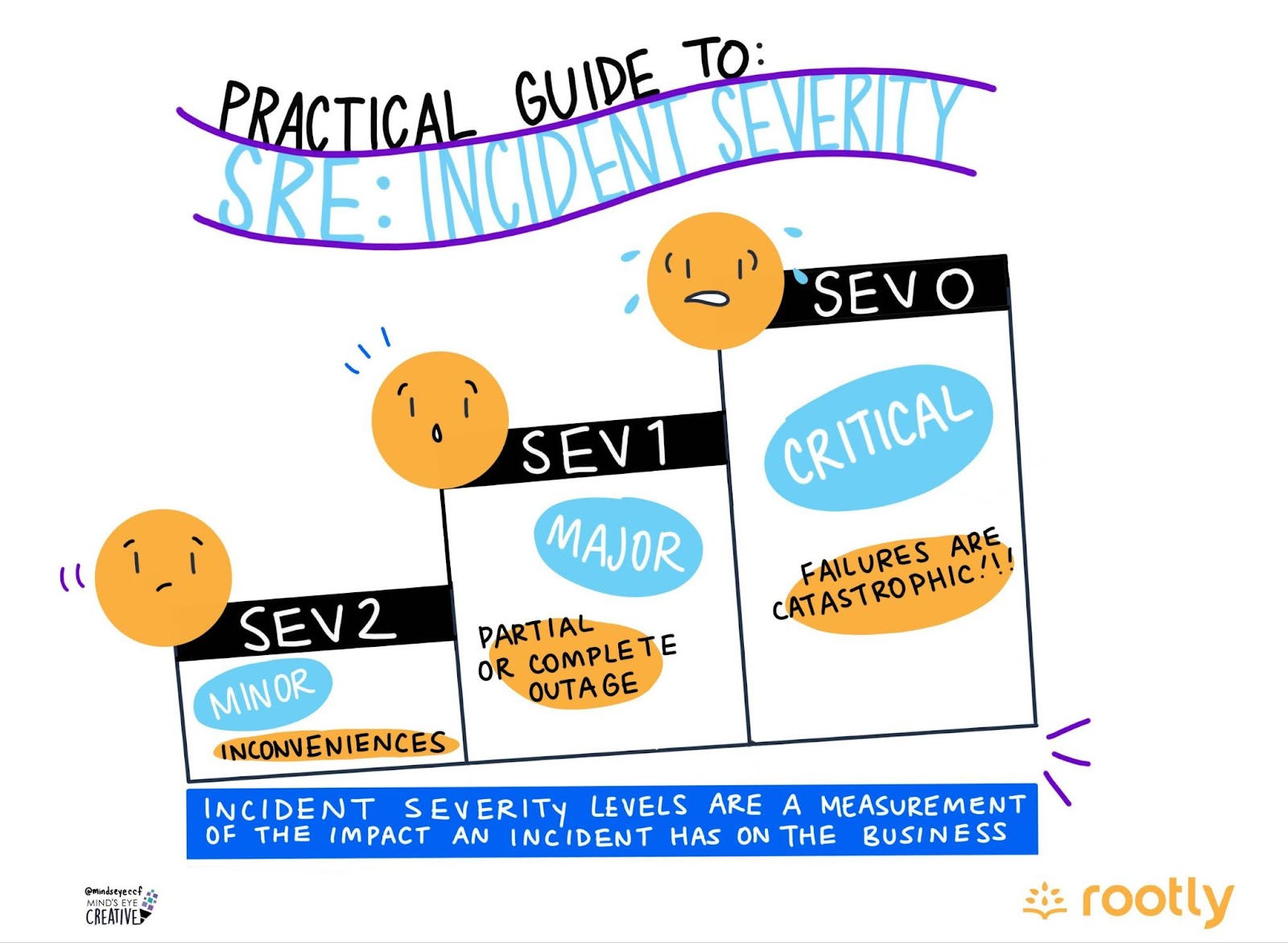Running a successful postmortem meeting starts long before the call begins and continues long after it ends. It requires structure, empathy, and the right tools to turn incidents into insights.
How to structure and run postmortem meetings: Prepare with a shared agenda, assign roles, then walk through a proven format: set the tone, review the timeline, highlight wins, analyze failures, define clear actions, and share the lessons. Rootly makes each step faster, smarter, and more impactful.
Key Takeaways
- Postmortem meetings should be structured and blameless to uncover system weaknesses and promote team learning without assigning blame.
- Timing is crucial for effective postmortems, ideally held within 24–72 hours after an incident to balance recall and emotional readiness.
- Participant diversity matters in postmortems, and meetings should include key responders, leadership, and downstream stakeholders to ensure holistic insight.
- A clear, repeatable meeting format increases impact, starting with context-setting and ending with actionable takeaways shared across teams.
- Ongoing follow-through turns insights into improvement, and tracking action items ensures the meeting drives real change—not just documentation.
What Is a Postmortem Meeting?

A postmortem meeting isn’t about blame—it’s about betterment. It’s a structured review that takes place after an incident, outage, or critical event to uncover what happened, why it happened, and how to prevent it from happening again. Known by many names—retrospective, debrief, after-action review—its essence remains the same: reflection with purpose.
But here’s the thing most guides don’t tell you: a successful postmortem isn’t just a checklist. It’s a cultural ritual. At Rootly, we believe these moments should spark transformation, not just documentation. They should help teams build empathy, understand systemic weaknesses, and uncover signals in the noise.
Why Postmortem Meetings Matter
Postmortems are not administrative overhead. They are some of the highest-leverage activities a technical team can perform. When done well, they:
- Strengthen systemic resilience
- Improve cross-functional alignment
- Surface invisible process debt
- Build psychological safety
In environments where failure is inevitable, learning becomes non-negotiable. A blameless, structured postmortem is one of the few tools that helps engineering teams grow stronger from their weakest moments.
When (and When Not) to Run a Postmortem

Incident Severity Guidelines
Not every blip deserves a 60-minute deep dive. At Rootly, we recommend a flexible, tiered approach:
SEV-0 / SEV-1 (e.g. data loss, prolonged downtime):
- Mandatory formal postmortem
- Synchronous meeting with multiple stakeholders
- Comprehensive report shared org-wide
SEV-2 / SEV-3 (e.g. brief error spike, rollbacked deploy):
- Lightweight summary via tooling
- Logged in Rootly for tracking patterns
- Full review only if repeated
Timing Matters
Memory decays faster than systems recover. The sweet spot for postmortem meetings is 24 to 72 hours after resolution—soon enough that details are fresh, but with enough emotional distance to allow objectivity.
Wait too long, and the raw learnings disappear. Act too fast, and teams may not be ready to engage thoughtfully.
Who Should Be Involved in the Meeting?
There’s no one-size-fits-all roster, but certain voices must be present:
- Incident Commander: Often the facilitator
- On-call Responder(s): Primary source of what happened
- Product/Eng Leadership: Context, accountability
- Customer Support or QA: Downstream impact
- Notetaker: Optional, but ideal for large incidents
Optional but valuable: SREs, observability teams, security leads. The key is to include perspectives that span the lifecycle of the incident—from alert to resolution to customer impact.
Meeting Structure: Before, During, and After
Pre-Meeting Preparation
Great postmortems don’t begin when the meeting starts. Prep is where the real leverage hides:
- Assign a clear facilitator and notetaker
- Share agenda and Rootly’s auto-generated incident brief
- Gather logs, screenshots, Slack threads, and timeline data
Rootly Advantage: Our platform auto-generates a chronological story from your alerts, chat threads, and actions—saving teams hours of manual prep.
During the Meeting: A 6-Step Structure
1. Set the Stage
Open with context and compassion. Acknowledge the stress of the event. Reiterate the ground rule: "This is a blame-free space. Our goal is system understanding."
Normalize discomfort. Invite honesty. Then, outline what you’ll cover.
2. Review the Timeline
Use Rootly’s AI-generated timeline to anchor the narrative. Have a key responder walk through detection, escalation, mitigation, and resolution.
Avoid storytelling; stick to observed facts. Shared understanding is the bedrock of useful analysis.
3. Identify What Went Well
This is the part most teams skip—and regret. Recognize where systems held up, where humans showed excellence, and where luck intervened.
Ask: "Where did we get lucky? What would have happened if we weren’t?"
4. Analyze Failures and Gaps
Now, get curious. Don’t settle for surface-level symptoms. Use methods like the 5 Whys or causal trees to trace back to root causes.
Look for:
- Process gaps
- Tooling limitations
- Misaligned incentives
- Ownership confusion
Rootly’s AI surfaces contributing factors, so you don’t miss the silent culprits.
5. Define Action Items
Without action, your insights dissolve. Assign:
- One owner per task
- A clear description
- A realistic deadline
Use Rootly’s Slack or Jira integrations to convert them into tracked tickets.
6. Finalize Notes and Share Learnings
Turn your messy notes into a digestible, shareable artifact. Highlight key learnings, impact, and follow-ups.
Push this report to relevant teams. Don’t bury it in Google Drive.
Rootly makes this easy by auto-building a report from your meeting timeline and task list.
Post-Meeting Follow-Through
This is where most postmortems quietly fail: action items drift into the void. Here’s how to keep momentum alive:
- Track completion with project management tools
- Review open items in sprint planning
- Schedule a follow-up in 30 days if needed
Rootly’s dashboard makes tracking seamless.
AI-Powered Enhancements for Postmortems

The future of postmortems isn’t just better facilitation—it’s augmented intelligence.
Rootly’s AI does what human teams can’t (or won’t):
- Auto-builds incident timelines from fragmented data
- Surfaces contributing factors from patterns
- Suggests action items based on prior cases
- Generates ready-to-share summaries and briefs
Instead of spending hours preparing, teams spend minutes learning.
Best Practices for Facilitating Postmortem Meetings
To guide a postmortem meeting effectively, your facilitation style should promote clarity, calm, and constructive reflection.
- Open with gratitude; it disarms defensiveness
- Set a timebox and stick to it
- Use neutral language ("the process allowed for this" vs "you caused this")
- Call out learning opportunities, not errors
- Summarize insights before ending
Your tone as a facilitator will shape the culture of future postmortems. Be kind. Be curious. Be clear.
Common Mistakes to Avoid
Even the most well-intentioned postmortems can fall short if you overlook these common traps.
- Holding the meeting too late (people forget)
- Skipping minor incidents (patterns go undetected)
- Not assigning owners (no one follows through)
- Over-indexing on technical failure (and ignoring org/process gaps)
- Blaming individuals (destroys trust)
Each of these erodes the long-term value of your postmortem culture.
Free Post-Mortem Meeting Template
- Template from Site Reliability Engineering book
- Template from The Practice of Cloud System Administration book
- Template from Google Developers Blog post
- Template from Azure status history posts
- Template from Michael Kehoe's blog post
- Template from the Real-World SRE book
- Template from Elastic Cloud incident report
Examples
- Google Compute Engine Incident #16007
- Azure status history
- Buildbucket Postmortem: 6% builds lost on 2015-04-22
- Google API infrastructure outage incident report
- Gitlab - Postmortem of database outage of January 31
- Summary of the Amazon DynamoDB Service Disruption and Related Impacts in the US-East Region
- Elastic Cloud Incident Report: February 4, 2019
Every Postmortem Is a Chance to Improve
Incidents are inevitable. Learning from them is a choice.
When teams run effective, blameless postmortems, they’re not just improving systems—they’re improving trust, clarity, and collaboration. Rootly helps you make the most of that moment. So the next time something breaks, you’ll know exactly how to turn the chaos into clarity.
Run your next postmortem the Rootly way.
FAQs
What is the purpose of a post mortem meeting?
The primary goal is to uncover what went wrong, what went right, and how to prevent future incidents—without assigning blame. It’s about improving the system, not pointing fingers.
What is another name for post mortem meeting?
A "post-mortem meeting" can also be called a retrospective, lessons learned meeting, after-action review (AAR), or debrief.
Who typically runs a post-mortem meeting?
Usually, the incident commander, SRE lead, or project manager facilitates the session. They guide the discussion, enforce psychological safety, and ensure follow-ups are assigned.
How soon should I host a post-mortem meeting after an incident?
Ideally within 24–72 hours of resolution—while memory is fresh but emotions have cooled.
What should a post-mortem report include?
A complete report must include a summary of the business and customer impact, a detailed timeline of events, a root cause analysis, and, most importantly, a list of specific action items with clear owners and due dates.
How do you keep a post-mortem meeting blameless?
The facilitator must set the tone by stating the blameless principle at the start and actively redirecting blame-oriented language. Focus the conversation on systemic failures ("the process allowed for an error") rather than individual actions ("your code caused the error").
How do you ensure action items are actually completed?
Treat action items like any other engineering task by creating tickets for them in your project management system (e.g., Jira, Linear). Assigning each item to a specific owner with a deadline makes follow-through visible and holds the team accountable.
.avif)























